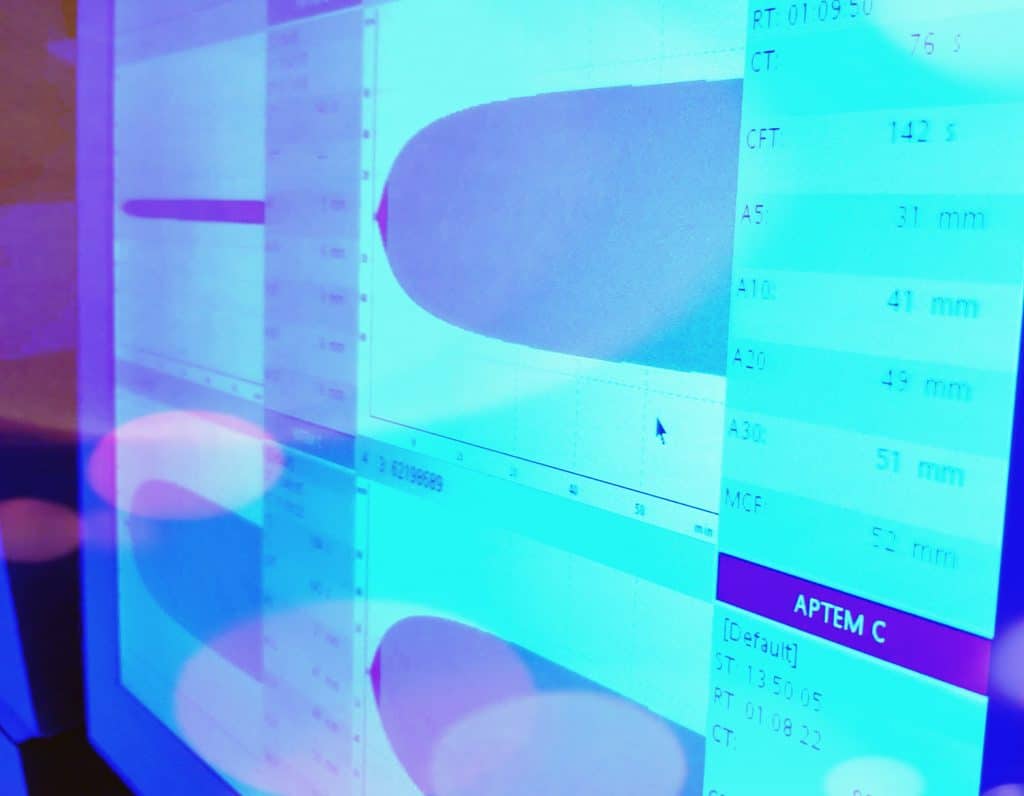Utilization of Thromboelastogram and Inflammatory Markers in the Management of Hypercoagulable State in Patients with COVID-19 Requiring ECMO Support

The role of extracorporeal membrane oxygenation (ECMO) in the management of critically ill patients with COVID-19 is evolving. Extracorporeal support independently confers an increased predilection for thrombosis, which can be exacerbated by COVID-19-associated coagulopathy. We present the successful management of a hypercoagulable state in two patients who required venovenous ECMO for the treatment of COVID-19. This included monitoring inflammatory markers (D-dimer and fibrinogen), performing a series of therapeutic plasma exchange procedures, and administering high-intensity anticoagulation therapy and thromboelastography- (TEG-) guided antiplatelet therapy. TPE was performed to achieve goal D-dimer less than 3000 ng/mL D-dimer units ( N ≤ 232 ng/mL D-dimer units) and goal fibrinogen less than 600 mg/dL (N = 200-400 mg/dL). These therapies resulted in improved TEG parameters and normalized inflammatory markers. Patients were decannulated after 37 days and 21 days, respectively. Post-ECMO duplex ultrasound of the upper and lower extremities and cannulation sites revealed a nonsignificant deep venous thrombosis at the site of femoral cannulation in patient 2 and no deep venous thrombosis in patient 1. The results of this case report show successful management of a hypercoagulable state among COVID-19 patients requiring ECMO support by utilization of inflammatory markers and TEG.
